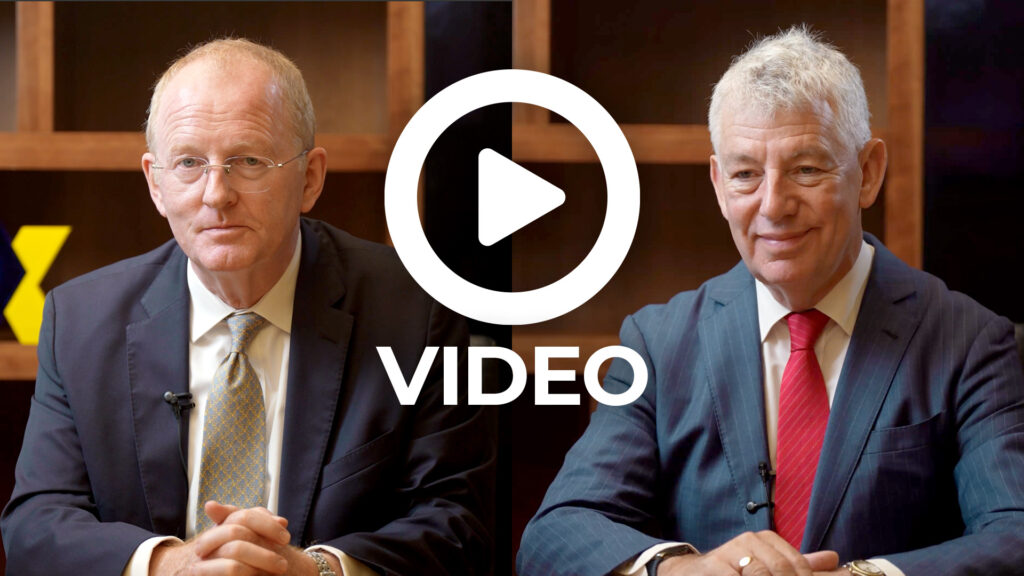Brexit considerations for aviation: Are the skies becoming any clearer? February 2017
A great deal was written in the immediate aftermath of last June’s referendum result as to the potential impact of Brexit on aerospace interests in the UK and how the future regulatory landscape might look.
Much of the literature was inevitably speculative and could only draw on existing models from other countries’ trading relationships with the EU as a guide to the UK’s possible post-Brexit arrangements. Since then, we have seen constitutional legal argument in the UK Supreme Court about Parliament’s role in the process of triggering Article 50, heated political debate over a “hard” or “soft” Brexit and an increasing recognition, confirmed by the UK government in January 2017, that continued UK membership of the single market post-Brexit is not feasible. However, is there any more clarity for the aviation industry as to how its interests might be affected and protected during and after the next two – three years? Below we look briefly at the headline issues and consider whether the government and aviation industry are any closer to resolving them.
Traffic Rights within the EU
Continued access for UK airlines to open skies on the EU – a right which currently depends entirely on the UK’s membership of the EU – remains a major priority for the UK industry. For any carriers with wide European networks, Brexit represents a significant challenge and for those who operate extensive fifth freedom and cabotage rights in the EU, the impact could be even greater. Ryanair chief executive, Michael O’Leary, for example, has warned of the potential impact of Brexit on low-cost air travel to and from the UK, particularly for those carriers based in the UK. For UK airlines which include elements of European ownership, the potential disapplication of the current regulatory regime for granting operating licences based on EU ownership and control threatens their continued ability to operate as they currently do. Likewise, EU-based airlines which have UK, rather than European, ownership and control find their own continued licensing placed in jeopardy.
Without a solution which adequately replaces the current access to open skies, the spectre of some airlines moving their operations to the EU whilst they can, subject to meeting ownership and control requirements both now and post-Brexit, and others having to hope they can fall back on bilateral arrangements between the UK and individual EU countries is a very real possibility.
Traffic rights to third countries
The principal concern here are those traffic rights that are currently enjoyed by UK airlines by virtue of air services agreements negotiated at EU level with third countries, most notably, though by no means exclusively, the US. If the UK no longer benefits from such agreements following Brexit, then for UK and US airlines alike, a solution is required to ensure that those traffic rights continue by some other means, whether by a new UK-US bilateral agreement or by the UK being permitted to be party to the existing EU-US agreement.
Similarly, there will remain multiple bilateral air services agreements between the UK and third countries which are likely to require some adjustment following Brexit. However these agreements are unlikely to be the priority for the government’s negotiators over the coming months.
Safety regulation
Current safety regulation of the UK aerospace industry is almost entirely overseen by the European Aviation Safety Agency (EASA) whose remit has increased over the last 15 years to the point where virtually all licences and approvals are issued by or under its guidance. EASA certifications are widely granted reciprocal recognition in other countries and indeed the UK has played a key role over the years in developing and refining EASA’s regulations.
If the UK were no longer to participate in EASA – which on a “hard” Brexit could happen – the ongoing validity of existing certifications would be in jeopardy, pending new domestic safety regulation and a renewed status for the UK Civil Aviation Authority (CAA) as the UK authority with sole responsibility for issuing approvals. The impact would be far-reaching for aerospace companies, affecting aircraft certificates of airworthiness and air operator certificates and the ability for airline group companies easily to move aircraft around their fleets, type certificates for aerospace products, approvals of design and production organisations, and maintenance organisation approvals. However EASA’s remit goes further to include many other aspects of civil aviation including aerodrome licensing, third country operator approvals, and flight crew licensing.
In a global industry which champions uniform and consistent regulation, regarding it as a major factor in promoting and enhancing safety, it would be a step backwards to revert to matters of aviation safety regulation being solely governed by domestic legislation and domestic oversight – even if the necessary resources are made available to the CAA to achieve that.
A bespoke arrangement?
There are multiple regulatory issues affected by Brexit which require attention in many industry sectors, and aerospace is no different. Aviation in the UK is overwhelmingly regulated by EU legislation and, whilst the key priorities for the Department for Transport over the coming months are likely to continue to be traffic rights and safety regulation, the industry will want to know how Brexit will affect many other issues including air passenger rights, other consumer regulation, environmental issues, security, ground handling rules, and implementation of new rules on the sale of package holidays.
In trying to discern the future for aviation following Brexit, there was an initial and understandable focus on existing models – chief amongst them the possibility that the UK could become part of the European Common Aviation Area, or, like Switzerland, could have a raft of treaties with the EU, including one which would essentially continue to apply EU open skies and the suite of EU aviation regulations such that little would change for UK aviation interests or indeed for EU companies with operations in or to the UK. However, as time has moved on since June 2016, those solutions appear further away, not closer.
As sensible as the other existing models – such as the Swiss model or membership of the European Common Aviation Area – may appear in order to limit the impact of Brexit on the aviation sector, the UK’s wider political climate cannot be ignored. Access to the single market, on the existing models contemplated, requires an acceptance of EU Treaty freedoms, including the fraught question of freedom of movement. That is currently a political non-starter and the UK Prime Minister made clear in January 2017 that the UK post-Brexit will not be a member of the single market. That principle has been repeated formally in the UK government’s White Paper published in February 20171.
Where does that leave those industry sectors for whom access to the single market has been fundamental to the way they currently operate? Unfortunately, there is little comfort and even less detail in the recent White Paper. In terms of traffic rights, there is a recognition that arrangements will be needed to “continue to support affordable and accessible air transport for all European citizens, as well as maintaining and developing connectivity”2 and also that new bilateral arrangements will be needed with countries such as the US, in relation to which air services arrangements are currently the subject of EU treaties; and, in relation to safety regulation, an acknowledgement that the UK’s future relationship with certain European Union agencies, including EASA, will need to be discussed3.
The government’s role is to secure the best arrangement possible for ongoing access to EU routes and to preserve routes to and from key third countries where those routes are currently agreed at EU level. In the context of traffic rights to and within the EU, it is possible that a bespoke bilateral air services agreement between the UK and the EU may be the best that can be achieved, albeit an imperfect solution if it results in loss of fifth freedom and cabotage rights. One question will be whether there will be scope for a sector-specific deal to preserve UK airlines’ access to EU open skies which could also preserve the existing rights of EU carriers to operate freely to, from and within the UK.
Whatever the answer to access to EU open skies, the industry will hope that the UK government will secure ongoing arrangements for the UK’s continued participation in and oversight by EASA given the upheaval of reverting to safety regulation at national level, which many would see as a backwards step, as well as being expensive and difficult to resource.
What will the Great Repeal Bill achieve?
In the context of the aerospace issues highlighted in this briefing, the short answer is ‘very little on its own’. Simply importing EU aviation regulations into UK law as is proposed will not address the central issues, namely the licensing, operation, and safety oversight of the UK aviation industry which are overseen at EU level, under the aegis of EU institutions, and are entirely premised on the UK’s membership of the EU. If the EU licensing and safety oversight function is taken away, domestic oversight (by the CAA) must take its place, but that is not achieved merely by the Great Repeal Bill, which also does not address the continuation, or not, of traffic rights.
The intended importation into English law of EU legislation also brings with it questions as to the continued influence of Court of Justice of the European Union (CJEU) jurisprudence following the Great Repeal Act. The UK government White Paper confirms an intention to bring an end to the jurisdiction of the CJEU in the UK. That however begs a number of questions. As in other industries, key EU aviation regulations have been very extensively construed and amended by CJEU case law. Once those regulations are part of English law, will the English courts apply just the “black letter” regulations; the regulations as interpreted by the case law; or the case law up until a stipulated cut-off date? Whichever approach is chosen, the effect on some regulations, for instance EC Regulation 261/2004 on denied boarding, cancellations and delays, could be fundamentally different. These are among the questions which cannot be ignored in debates over the Great Repeal Bill.
HFW perspective: current priorities for the aerospace industry
In this current phase whilst the government departments are working hard on educating both themselves and the Department for Exiting the EU on the key issues for industry sectors, it is essential for the aerospace industry to ensure that its priorities are being recognised. Much good work is being done by the Department for Transport and by industry associations in this regard.
Individual organisations however must continue to assess their own priorities – how they currently operate and their understanding of the EU regulations that enable them to operate in that way. Fundamental to that process is recognition of the current regulations that are essential to the continued viability of the business. In other words, what operations and related regulations are nice to have and crucially, where are the lines in the sand? A UK airline, for example, can continue to operate flights to Spain if current EU passenger rights rules on flight delays and cancellations remain or are amended or repealed – the rules may change but the operation continues. The same UK airline cannot fly to Spain at all if it has no traffic rights.
The government will only be able to represent the interests and priorities of the aviation industry in the discussions that will ensue when Article 50 is triggered if it is comprehensively educated as to what those interests, priorities and lines in the sand are. During the biggest period of regulatory upheaval in a generation, it is essential that the aerospace industry takes every opportunity to communicate those matters to its associations and direct to the government.
Brexit issues in aviation
To watch a video of Sue Barham discussing Brexit issues in the aviation industry, please click here.
Footnotes
- The United Kingdom’s exit from, and new partnership with, the European Union: https://www.gov.uk/government/publications/the-united-kingdoms-exit-from-and-new-partnership-with-the-european-union-white-paper/the-united-kingdoms-exit-from-and-new-partnership-with-the-european-union–2
- Para 8.32
- Para 8.42
Download a PDF version of ‘Brexit considerations for aviation: Are the skies becoming any clearer? February 2017’










